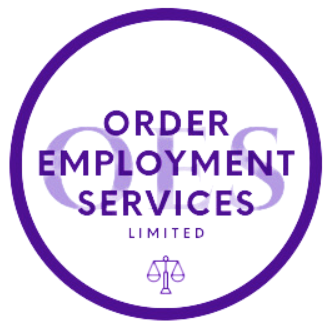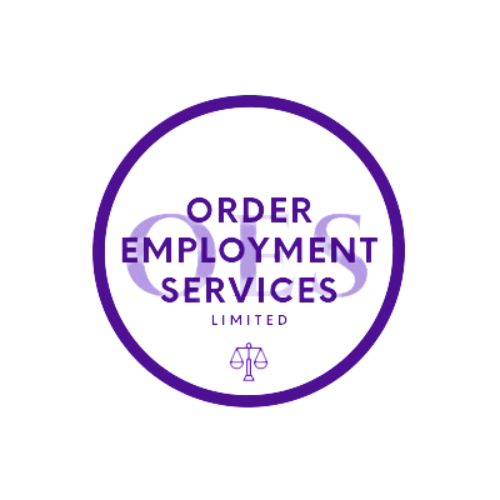
Understanding Your Rights and Opportunities: Maternity Leave, Adoption Leave, and Flexible Working in the UK
Reduce operational costs
Increase profitability
Improve efficiency
Achieve business aims
In the ever-shifting terrain of UK employment law, the knowledge to steer through maternity leave rights and flexible working regulations is not just a compliance exercise, but a strategic advantage for small and medium-sized employers (SMEs). The essence of these laws is to safeguard the interests of employees during pivotal life events, while still maintaining the operational integrity and agility of businesses. For SMEs, the challenge multiplies as resources are leaner, and every decision weighs heavier on the scales of workplace balance.
Acknowledging the delicate balance between supporting employee welfare and safeguarding business viability, this guide is meticulously crafted to offer actionable guidance. It seeks to demystify the complexities surrounding maternity and adoption leave, as well as flexible working practices, ensuring employers are well-equipped to navigate these waters with confidence and care. Herein lies a comprehensive path forward, built on a foundation of legal precision, operational pragmatism, and a deep-seated respect for the human elements at play in the workplace.
By the end of this journey, you'll have a robust understanding of what is required to manage these aspects of employment law effectively, ensuring that your business not only complies with legalities but also champions the rights and well-being of its employees. This isn't just about adhering to the rules; it's about leading with empathy and foresight in an age where the nature of work is continuously evolving.
Understanding Maternity Leave Rights and Flexible Working
Maternity leave rights in the UK form an essential pillar of employment law, underscoring the nation's commitment to supporting families during significant life milestones. Underpinning these rights is the statutory entitlement where eligible employees can take up to 52 weeks of maternity leave, with the first 39 weeks typically being paid—a vital factor in family financial planning. It’s paramount that employers understand the nuances of these rights, including how long is maternity leave in the UK, to foster a supportive work environment that aligns with legal standards.
Adoption leave in the UK mirrors the provisions of maternity leave, granting adoptive parents comparable time off with pay to bond with their child. Understanding and managing these rights is crucial for SMEs to ensure both compliance and support for employees during these transformative periods.
The advent of the flexible working bill expands these discussions into the realm of adaptable work arrangements. Flexible working requests, once a perk, are now increasingly viewed as a fundamental right, allowing parents to return to work after maternity leave on terms that accommodate their new family responsibilities. Employers are tasked with responding to these requests judiciously, ensuring that statutory rights are met and that the business can maintain its operational goals.
Strategies for Maternity and Adoption Leave Management
Developing robust strategies for managing maternity and adoption leave is an intricate process that requires thoughtful consideration and strategic planning. SMEs must craft policies that are fair, transparent, and in full compliance with UK employment laws. The following strategies are designed to guide employers through the establishment of a seamless leave management system:
Policy Development: Begin with a clear, written policy that outlines the specifics of maternity and adoption leave rights. This should include the duration of leave, the process for requesting leave, statutory pay entitlements, and any company-specific benefits.
Communication: Establish open lines of communication with employees planning to take leave. Ensure they understand their rights and responsibilities and keep them informed about company updates during their absence.
Financial Planning: Account for the financial impact of leave on your business. Consider how you will manage the payment of statutory maternity pay (SMP) and any additional top-ups you might offer.
Flexible Return Plans: Develop return-to-work plans that are flexible and considerate of the new needs of parents. This may include phased returns, flexible hours, or the option to work remotely.
Training for Management: Train your managers and HR team on the nuances of leave rights and the importance of handling these matters sensitively and fairly.
Support Systems: Implement support systems for returning parents, such as mentorship programs, to ease the transition back to the workplace.
Incorporating these strategies into your business operations is not only about fulfilling legal obligations; it’s about building a supportive and inclusive company culture that values the contributions of all employees. Through careful planning and consideration, SMEs can create a workplace environment that respects and upholds maternity and adoption leave rights, benefiting both the employees and the business.
Technological Solutions for Managing Leave and Flexible Working
In today's digital age, technology plays a pivotal role in streamlining HR processes, including the management of maternity and adoption leave and flexible working arrangements. SMEs can leverage a variety of software solutions to enhance efficiency, accuracy, and compliance with employment laws. Here's a look at some technological tools and their potential impact on mid-sized businesses:
HR Management Systems: Comprehensive HR software can manage leave applications, track leave balances, and monitor return-to-work schedules. These systems often come with self-service portals, allowing employees to submit requests directly, reducing administrative overhead.
Leave Planning Tools: Specialised leave planning tools can help predict and plan for staff absences, ensuring business continuity. They can also provide financial forecasting features to prepare for the cost implications of leave.
Flexible Working Platforms: There are platforms designed to support flexible working arrangements, offering functionalities like remote clock-in and clock-out, schedule management, and productivity tracking tools.
Communication Software: Tools like Slack and Microsoft Teams enable continuous communication with employees on leave, keeping them engaged and informed about workplace developments.
Legal Compliance Checkers: Some tools are designed to help businesses stay compliant by providing regular updates on changes to employment laws, including maternity and adoption leave policies and flexible working legislation.
When evaluating these technologies, consider the following:
Cost vs. Benefit: Assess the cost of implementation against the potential benefits in terms of time savings, reduced errors, and improved compliance.
Scalability: Ensure that the chosen solution can scale with your business as it grows.
User-Friendly Interface: Select tools that are intuitive and easy for both HR staff and employees to use.
Integration Capabilities: Consider how well the technology integrates with your existing systems to ensure seamless operation.
Support and Training: Look for solutions that offer robust customer support and training resources to facilitate smooth adoption.
By adopting these technological solutions, SMEs can significantly enhance their ability to manage leave and flexible working requests effectively, providing a better experience for both employees and HR teams, while also keeping an eye on the bottom line.
Case Studies and Real-World Examples
To truly understand the impact of well-managed maternity leave rights and flexible working policies, we turn to the stories of SMEs that have navigated these waters successfully. Here are summarised case studies that provide insights into real-world applications of the strategies and technologies discussed:
Case Study 1: Embracing Flexibility
A mid-sized tech company faced challenges when a significant portion of its workforce required maternity leave simultaneously. By implementing a flexible working platform, they facilitated remote work and flexible hours, allowing parents to return to work under adaptable conditions. This not only maintained productivity but also enhanced employee loyalty and satisfaction.
Challenges: Adjusting management mindsets to trust in remote work efficacy.
Successes: Retention of key staff, sustained productivity, and positive workplace culture.
Case Study 2: Comprehensive Leave Planning
An SME in the manufacturing sector used a leave planning tool to manage the absence of employees on maternity and adoption leave. The tool helped forecast the absences and plan temporary cover without disrupting operations.
Challenges: Training staff to use the new system and ensuring temporary staff could integrate smoothly.
Successes: Smooth business continuity and well-received support for parental leave.
Case Study 3: Legal Compliance and Support Systems
A small retail chain utilised a legal compliance checker to stay updated with the latest changes in maternity and adoption leave laws. They also established a mentorship program for returning parents, easing their transition back into the workplace.
Challenges: Keeping up with frequent legal updates and fostering a supportive environment for mentors and mentees.
Successes: Compliance with legal standards and successful reintegration of employees post-leave.
These case studies illustrate the importance of a proactive approach to managing maternity and adoption leave and flexible working. While challenges are inevitable, the successes show that with the right strategies and tools, SMEs can create a resilient and supportive work environment that values and supports its employees' life stages.
OES Conclusion
Navigating the intricacies of maternity leave rights, adoption leave, and flexible working policies requires more than just a cursory understanding of the law; it demands a commitment to ethical management and genuine support for the well-being of employees. This guide has outlined actionable strategies for SMEs to implement fair, compliant, and supportive policies that not only meet legal requirements but also foster a positive and productive workplace culture.
We have explored the value of clear communication, financial planning, supportive return-to-work programs, and the strategic use of technology to simplify these processes. The real-world case studies provided demonstrate that while challenges are part of the journey, the successes are both attainable and rewarding.
As employers, embracing these practices signifies a step towards a more dynamic, empathetic approach to business—one that sees beyond the balance sheets to the people who are the cornerstone of your success. It is an investment in the future of work, where flexibility and understanding are not just appreciated but expected by the workforce
Continue the Conversation
The landscape of work-life balance is ever-changing, and staying informed is key to navigating it successfully. We invite you to join our community of forward-thinking SMEs by subscribing to our newsletter, where we share the latest updates, insights, and tips on HR best practices.
Stay Informed: Subscribe to our newsletter to keep abreast of the latest in HR innovations and best practices.
Deepen Your Knowledge: Download our detailed eBook to gain more insights into HR Mastery.
Get Personalised Advice: Contact us for a personalised consultation to discuss how our services can be tailored to your unique needs and help you navigate the complexities of HR management.
Where you are in need of personalised advice, our doors are open for a consultation to tailor an HR solution that fits your unique business needs.
Take the step today to ensure your business is not only compliant with UK employment laws but also a leader in creating a supportive and engaging workplace for all employees.



